How many drops of water fit on a penny? Here’s a quick and easy science experiment that kids will love because the results are impressive!
This science experiment teaches kids about the concept of surface tension. They’ll also be exploring how soap destroys surface tension by pushing the water molecules apart from each other.
When you ask kids how many drops of water will fit on a penny, they’ll probably guess 3 or 4 drops. Maybe 5. Everyone knows that drops of water aren’t very big, but then again, neither is a penny! So a penny probably won’t hold many drops.
Kids will be very surprised to find out how many drops of water a penny can hold. It’s actually a LOT!
This post contains Amazon affiliate links, which means that I earn from qualifying purchases at no additional cost to you.
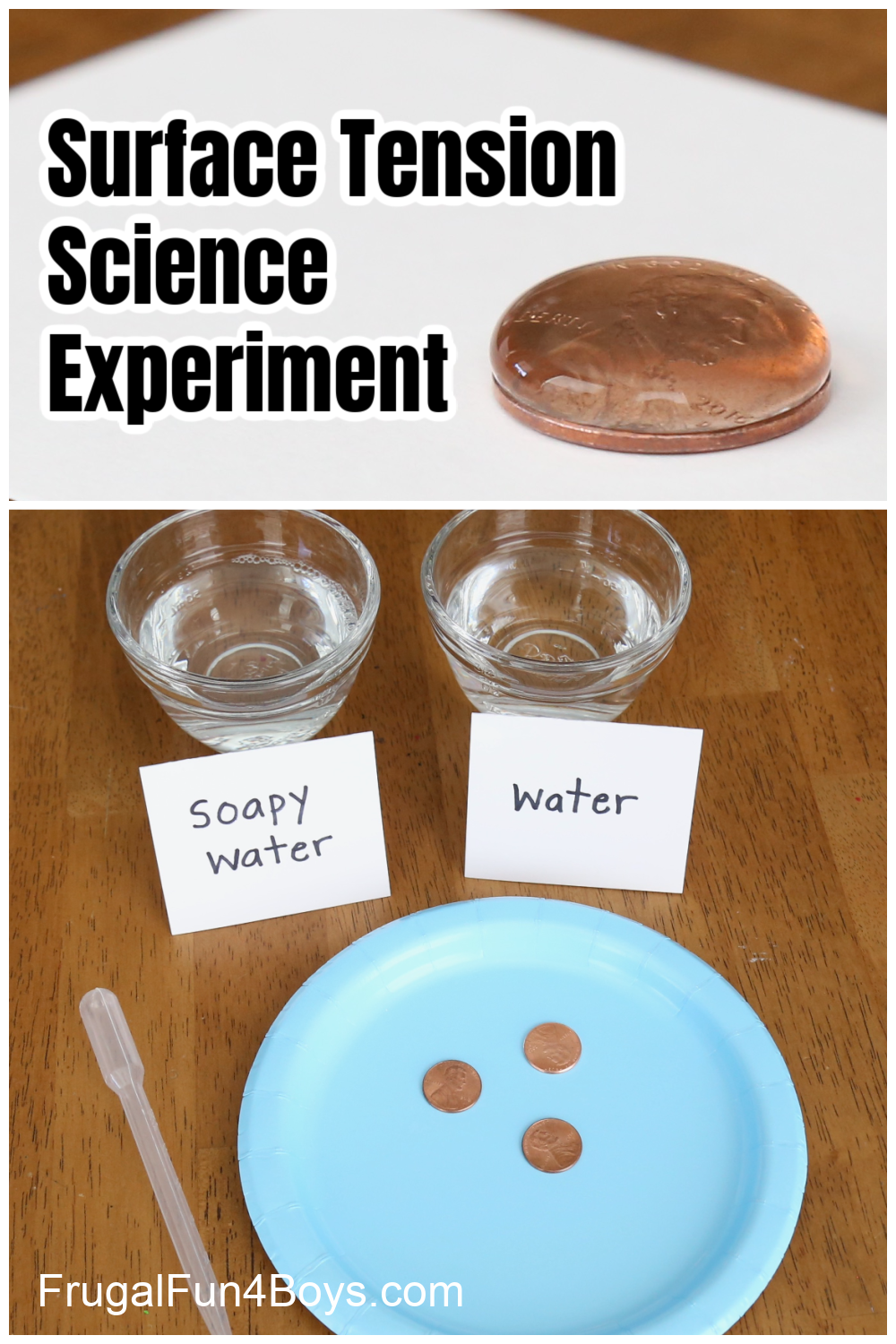
In this experiment, we’ll compare the surface tension of water with the surface tension of soapy water. Soap greatly decreases surface tension!
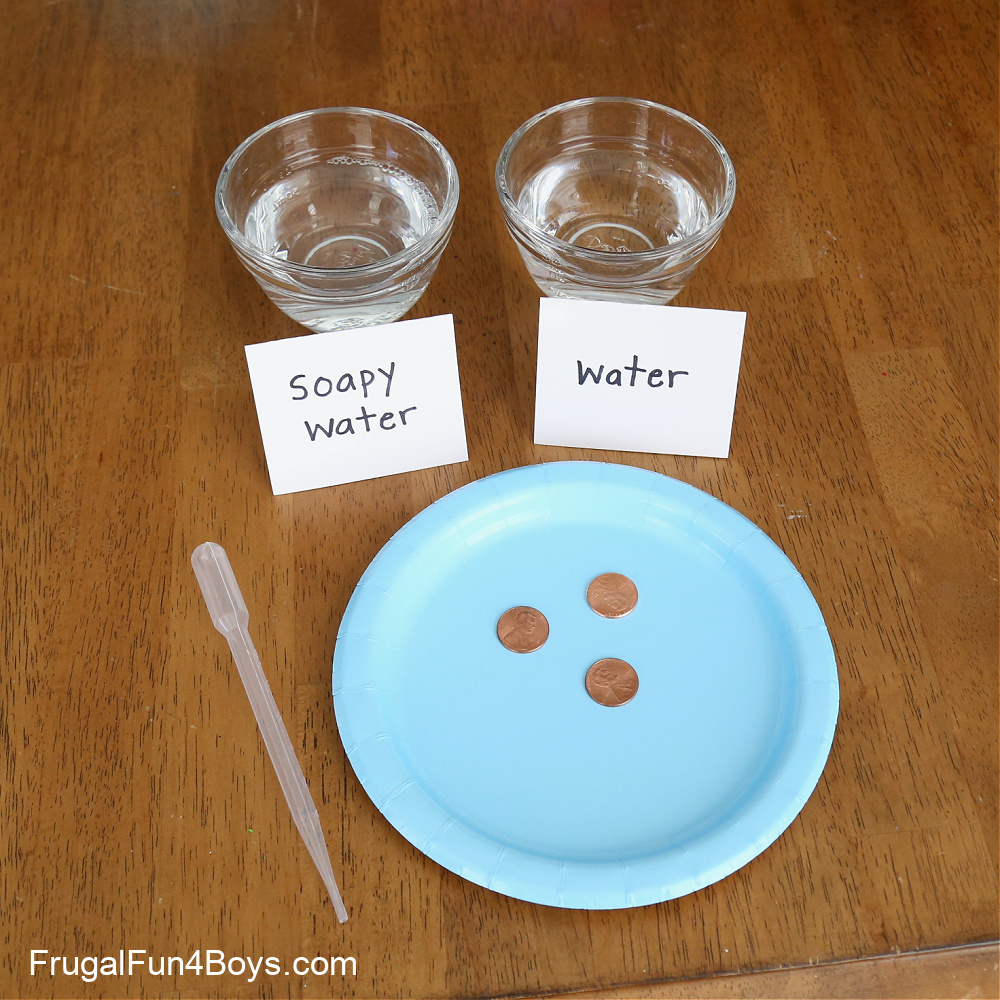
The procedure for this experiment is simple. Use a dropper/pipette to drop water onto a penny. Carefully count the drops as you go. These plastic pipettes work well. We like having them on hand for all kinds of activities.

It’s just amazing to watch the drops of water pile up on the penny! We tried this several times, and we were able to get 23-27 drops on the penny each time before the water ran off the side.

Then we compared the surface tension of plain water with soapy water. Would we be able to get the same number of drops of soapy water onto the penny?
Nope. Only 12-15. We could only get about half as many drops of soapy water on the penny before the water ran off over the side.
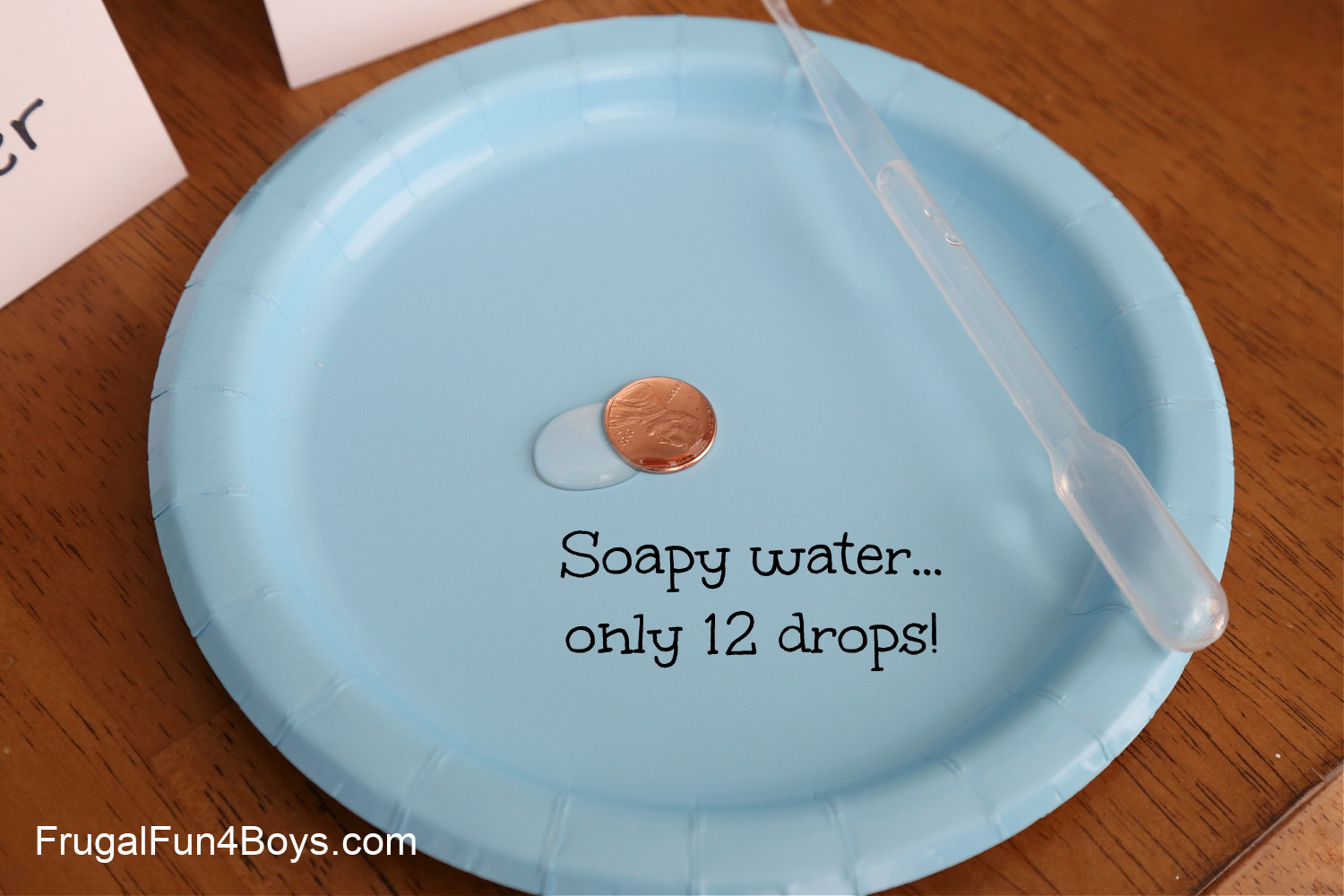
The Science Behind the Penny Drops Experiment
The way water creates a rounded surface is called surface tension. Surface tension is what allows you to fill a glass all the way to the top… and then some! It’s what gives the water the domed look on the penny.
Water has strong surface tension because of its polarity. Water molecules are polar, meaning that one end of each molecule has a positive charge while the other end has a negative charge. Because of these opposite charges, water molecules are attracted to each other. They form hydrogen bonds with each other. If you’re working with young kids, you can tell them that it’s like the water molecules are holding hands with each other and they don’t want to let go! This is what is happening on top of the penny.
Soap decreases the surface tension of water by pushing apart the water molecules. Each soap molecule has an end that is attracted to water and an end that repels water. The hydrophobic ends of the soap molecules (the ends that don’t want to be near water) squeeze their way between water the molecules as they work their way to the surface. You can read more about soap and its effect on surface tension here.
Need more simple science ideas? We have tons of educational and engaging science experiments!
See more than 25 Cool Science Experiments here.
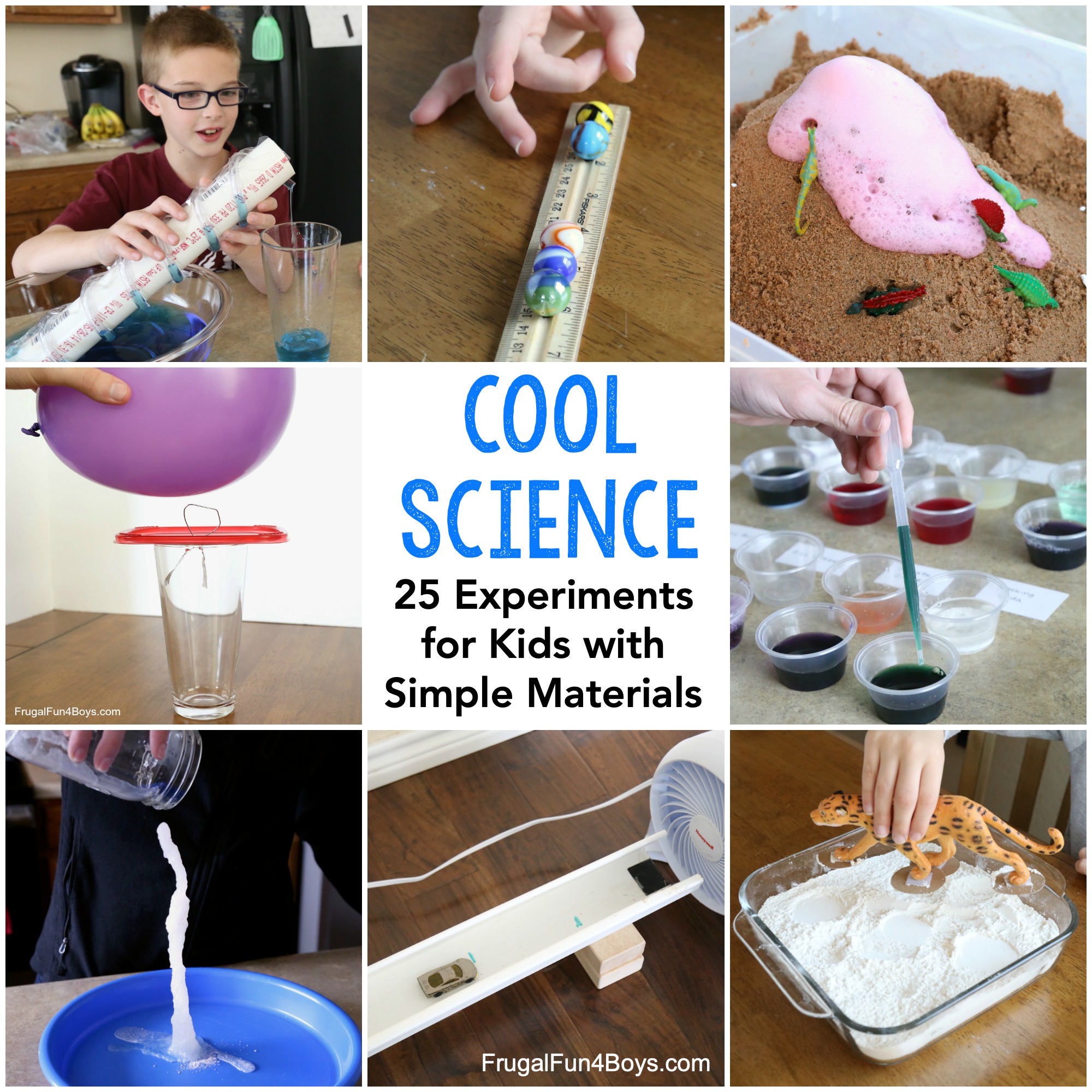
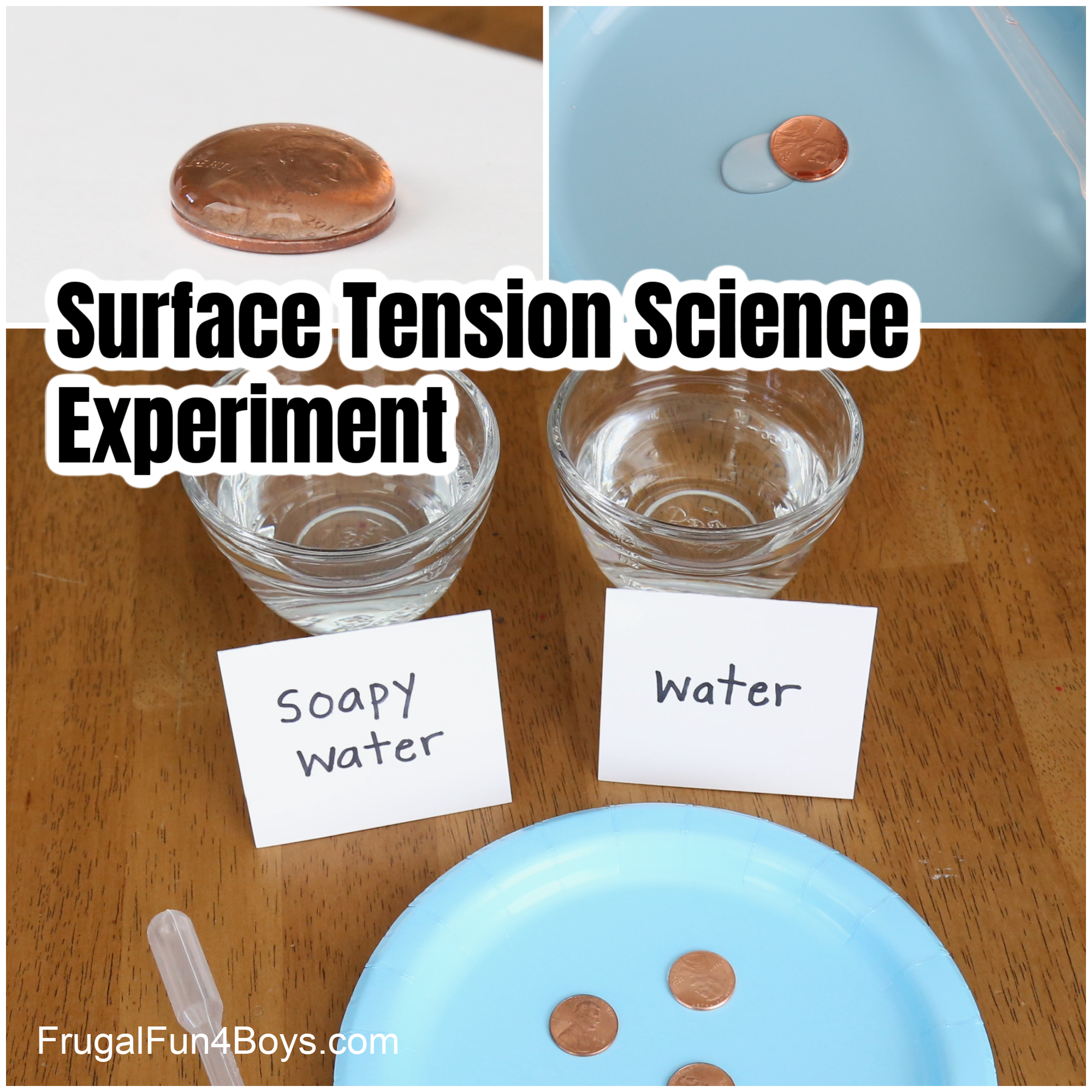

1 Comments
Gloria Aug 28, 2023
I love all these experiments and even better the simple way to explain them . Thank you
Post a Comment